Viper V380 RGB headset review
For a comfortable gaming experience, there are a couple of products you definitely need. Besides a computer with a good video card, which can be pretty hard to find these days, a set of gaming peripherals can offer a lot of joy. For example, a decent mouse and keyboard can offer more comfort and improve your gaming performance. A lot of gaming peripherals also feel and look a lot better than the typical run-off-the-mill peripherals that come with most OEM PCs. Once you have a good mouse and keyboard, you can start adding more gaming products to your setup. A good mousepad is indispensable, of course, and even a product like a gaming chair can add extra comfort for long gaming sessions. But this review is about another item that's crucial for gaming; a headset!Besides pulling you more into the game, and allowing you to hear certain sounds like footsteps and gunshots more clearly, a headset allows communication with your team members and ensures your family or housemates aren't bothered by all noise generated by your games! These days there are a ton of companies that manufacture gaming headsets. I recently checked out the Viper V570 Blackout mouse and Viper V551 mouse from Patriot -- in this review I'm taking a closer look at the firm's Viper V380 RGB 7.1 virtual surround sound gaming headset. This is the flagship headset in Patriot's Viper gaming peripheral portfolio. Patriot is a well-known name in the memory market. Last decade, the company followed a lot of other firms by launching a dedicated line of gaming products. Patriot aims to offer feature-rich gaming peripherals at price points that won't break the bank.
V380 ships surprisingly well-cushioned
The Viper V380 ships in a decent-sized cardboard box with a red/black color scheme. The company rates this headset as an "expert" level product in its gaming headset portfolio. It's a very sturdy box and once you open it you notice the headset is surprisingly well cushioned by two large pieces of foam.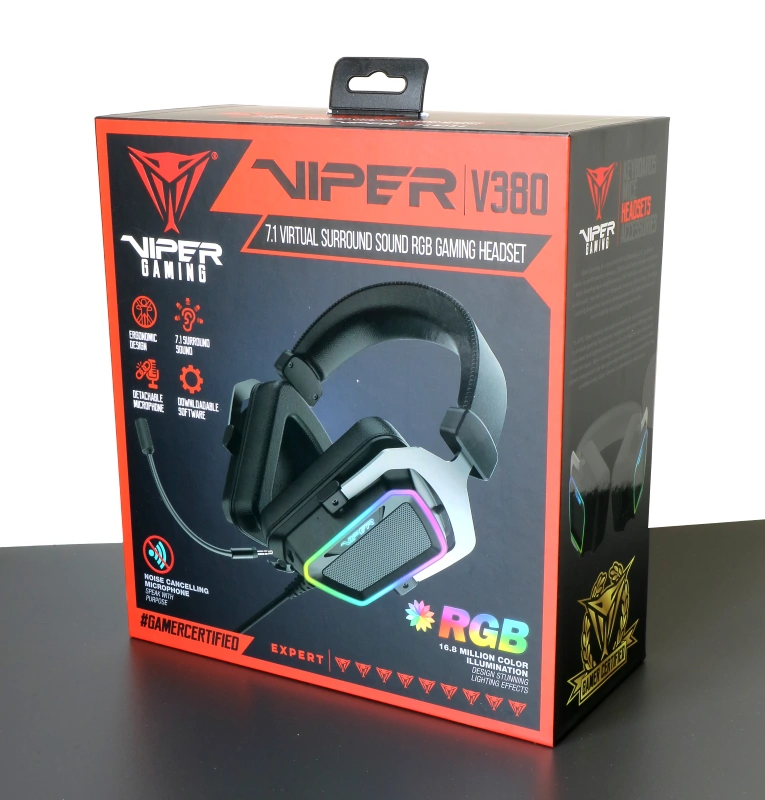
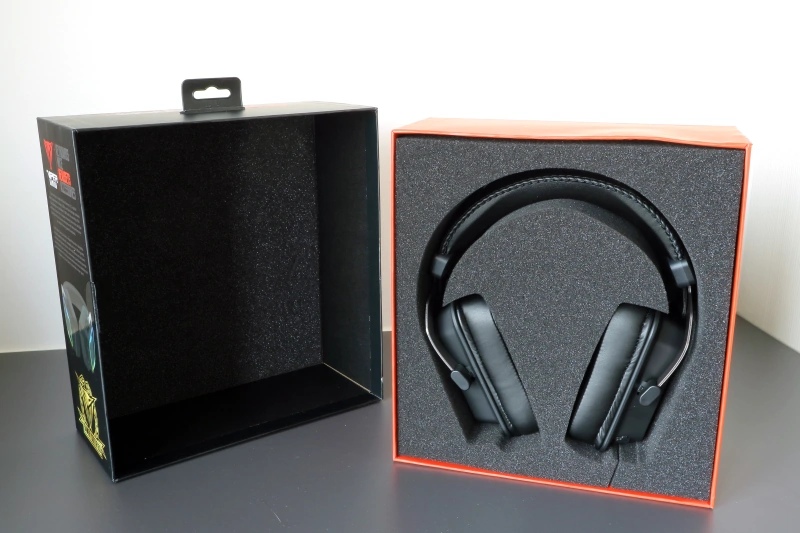
Inside the box, we find the headset, the detachable microphone, two Viper head stickers, and a quick start guide. The latter basically informs you where you can download the headset software. The Viper V380 headset has a 2.2-meter long braided cable with a gold-plated USB Type-A connector. This cable is relatively stiff. There is no option to use a 3.5mm jack so this limits compatibility a bit. It's understandable given the feature set, but it's definitely something to consider before buying this product.
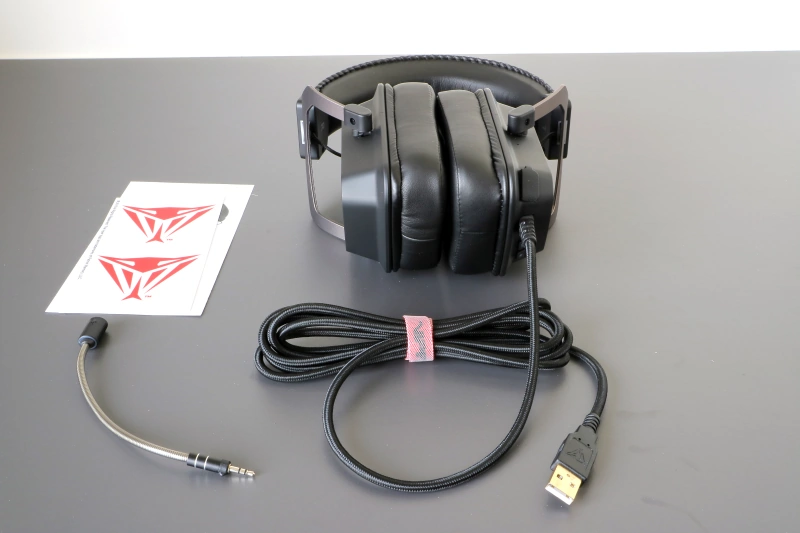
Closer look at the design and features
My first impression of the Viper V380 headset is that it looks a lot like a retro edition of the popular HyperX Cloud II series. It's not a carbon copy though. While the Cloud II has round earcups, the Viper V380 uses larger, rectangle-shaped earcups. But other than this, a lot of the design elements are very similar. The Cloud II already gave a slightly industrial look & feel and the Viper V380 surpasses this with the combination of its angular earcups, the plastic/metal construction, and the exposed wiring. The headset measures 164mm x 93mm x 235mm (L x W x H) and weighs 310g.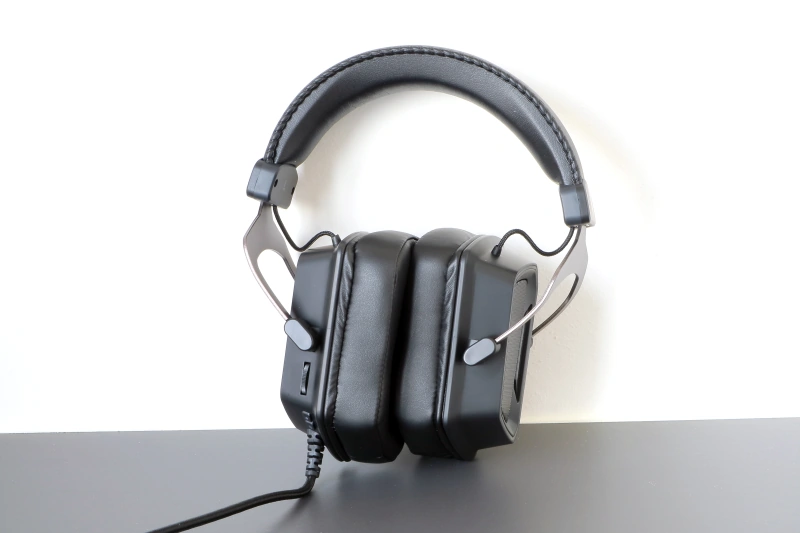
All of the V380 headset controls are concentrated on the left side of the peripheral. There is a microphone mute button as well as a button to control the RGB LED illumination. Of course, there's also a volume adjustment wheel. At least at first, due to the position where it's located, I found the volume dial on the V380 a bit less intuitive to use.
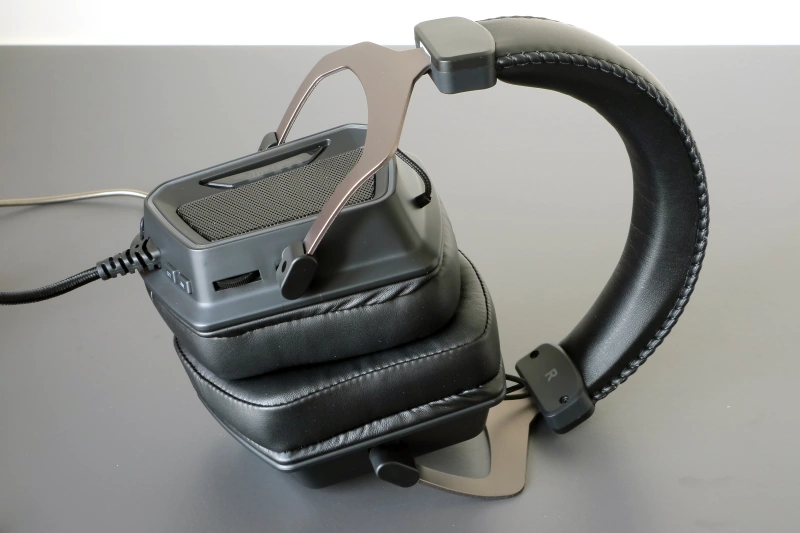
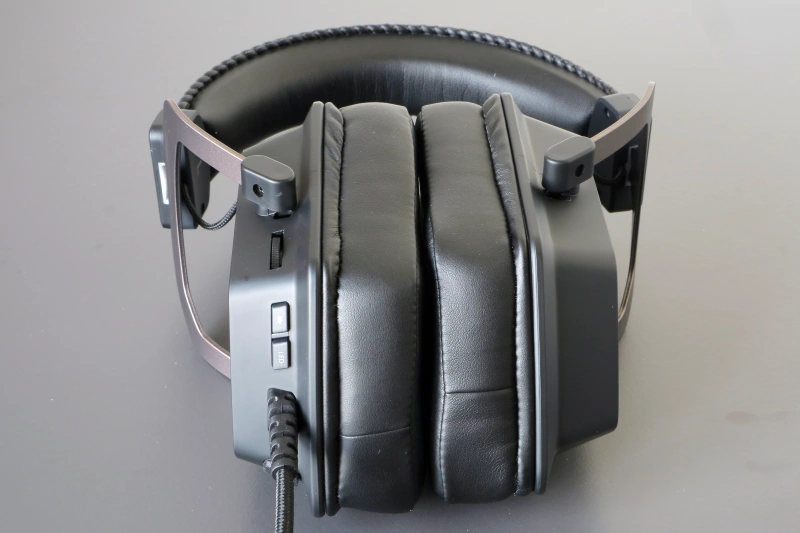
Patriot picked a black/grey color scheme for the Viper V380. The headband has black stitching and has a very stylish, debossed VIPER logo. The headband size can be adjusted to accommodate your head. The company describes the headband material as "protein leather". It's very supple and soft -- but it does feel a bit thin. Compared with the more expensive HyperX Cloud II, the build quality of the Viper V380 feels more average.
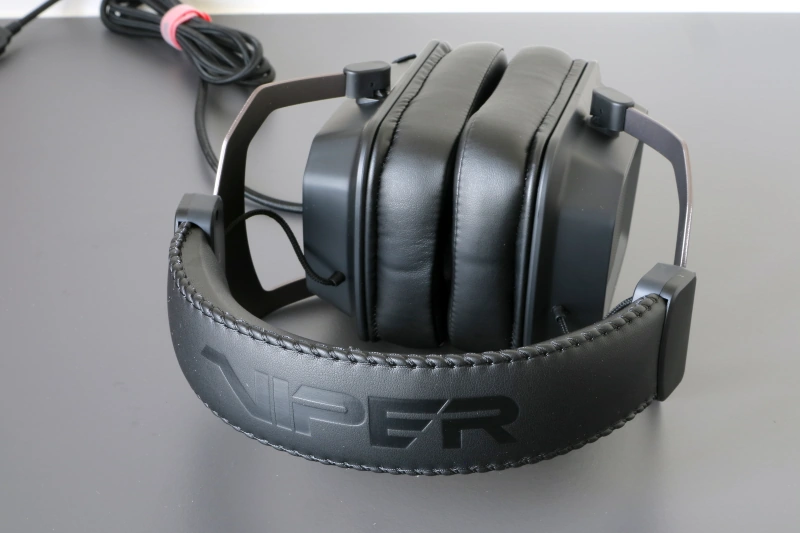
With the V380, you get a lot of the typical gaming headset features. This includes large ear cans and a detachable microphone. The microphone is omnidirectional and has noise-cancellation. When not plugged in, the microphone jack can be covered by a rubber flap. The microphone is very flexible and has a black plastic end. A foam mic cover is not included.
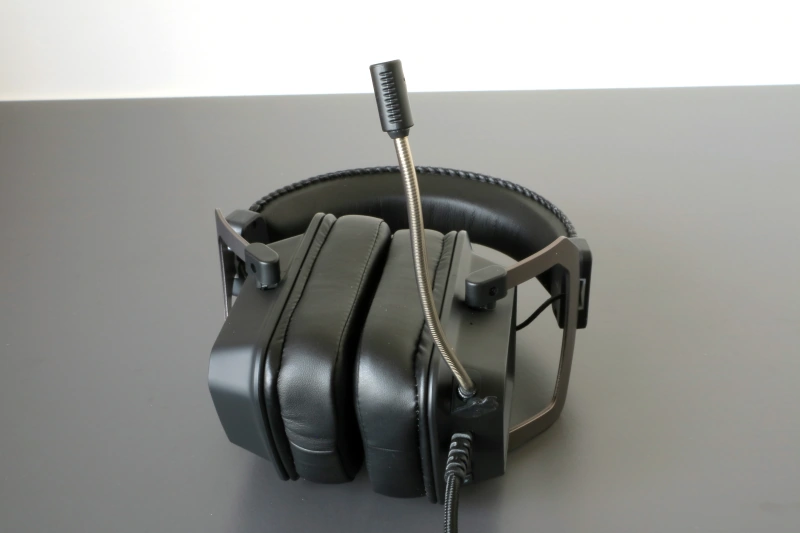
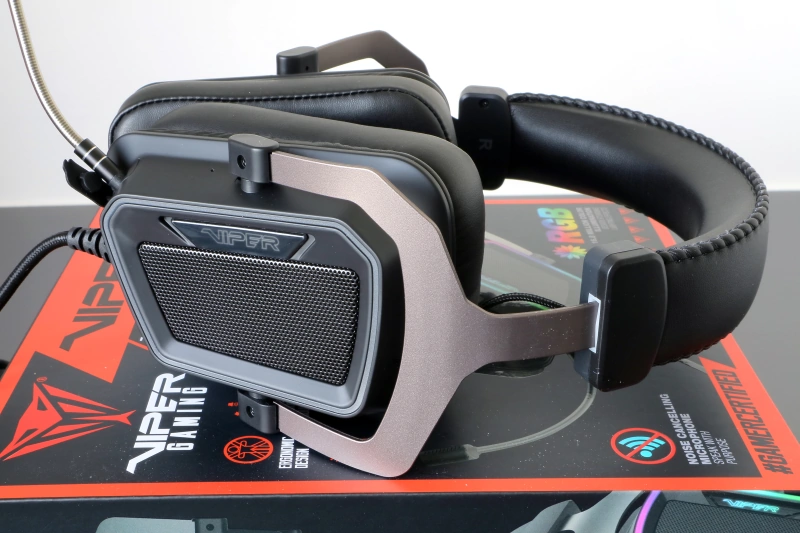
The hinged earcups use synthetic leather, it feels thicker and more durable than what's used for the headband cushioning. The V380 has two 53mm neodymium drivers and uses a closed ear design for passive noise cancellation. There is support for 7.1 surround sound but this is a software implementation so not as good as real surround sound.
Headphone specifications:
- Frequency Response: 20Hz - 20kHz
- Impedance: 64 Ohm at 1kHz
- Sensitivity: 106dB ± 3dB at 1kHz
- Frequency Response: 100Hz-10kHz
- Signal to Noise Ratio (SNR): 60 dB
- Sensitivity : -42 ± 3dB
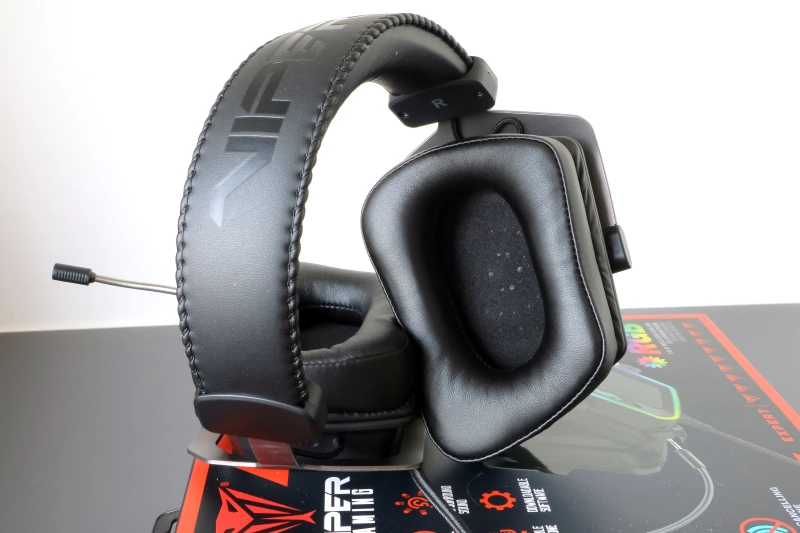
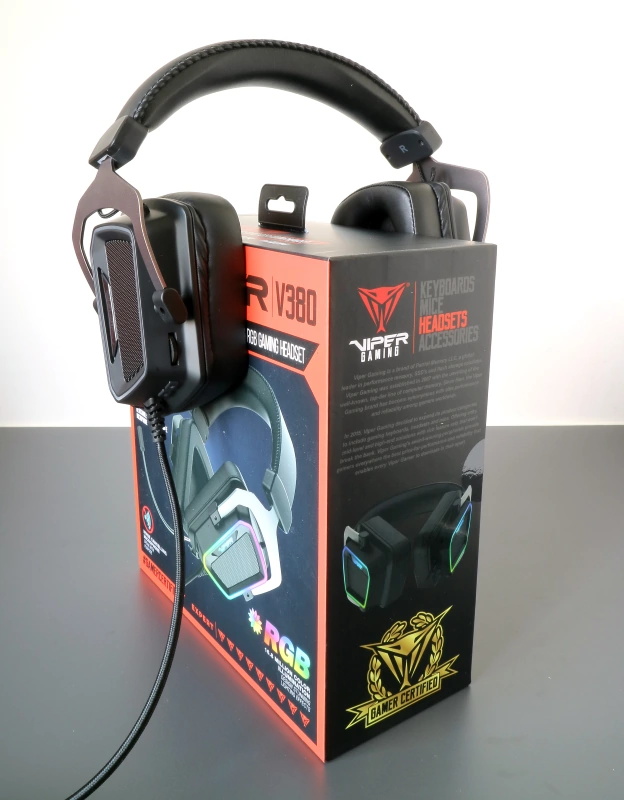
The software
The Viper V380 exclusively supports Windows. The software tool can be downloaded via the Patriot website. My initial impression is pretty much the same as what I noticed when using the utilities for the company's Viper gaming mice. The software is snappy and gives access to various features -- but it doesn't look very polished. The main screen shows a poor quality image of the Viper V380. This is supposed to be an image with a transparent background but it wasn't edited properly, the headset image has an edge with a lot of white pixels, which gives the tool a low quality look.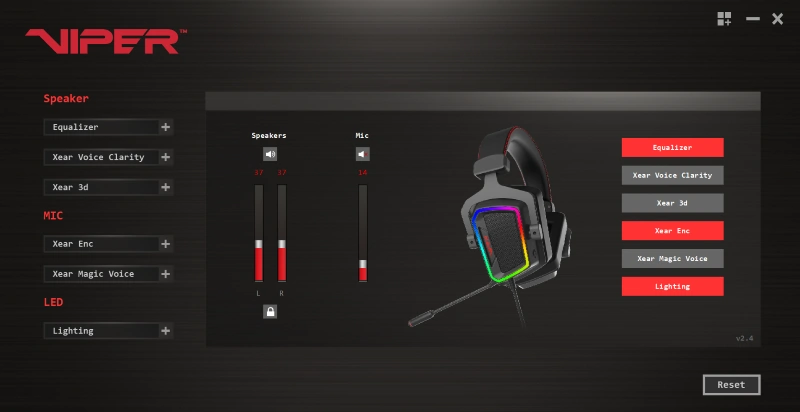
The right side of the utility offers a quick on/off switch for some of the features -- while the left side panel offers a little bit of customization. Without reading the manual, some of these names don't make a lot of sense. Anyway, first up we have the equalizer. This setting allows you to adjust the sound profile. At first, it seems like a simple on/off switch. Much to my surprise, a sound equalizer menu appears after clicking the "default" button. Weird naming here.
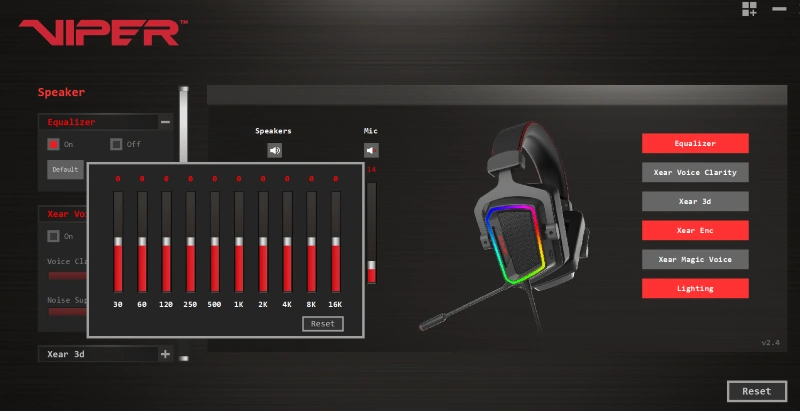
Next we have Xear Voice Clarity, a feature that aims to enhance speech. One step below is Xear 3D, to switch on the virtual 7.1 surround sound.
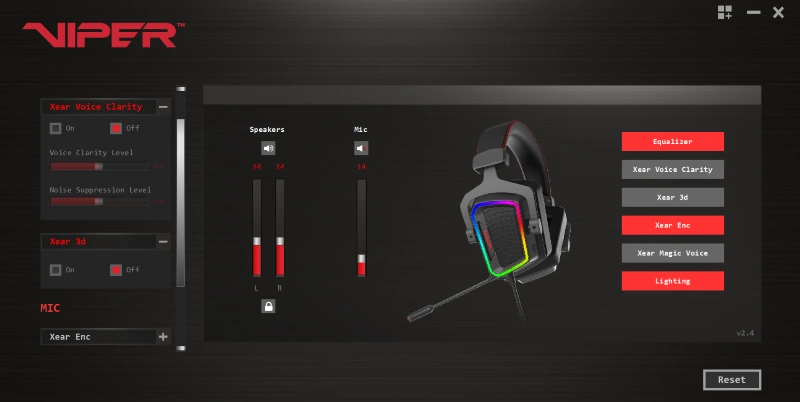
There are a couple of microphone settings too. Xear ENC aims to reduce background noise -- to improve the sound quality of the microphone. Switching this on should allow others to hear your voice more clearly. Xear Magic Voice on the other hand is more of a fun feature, this functionality distorts your voice to make you sound like a man, woman, cartoon figure, or monster.
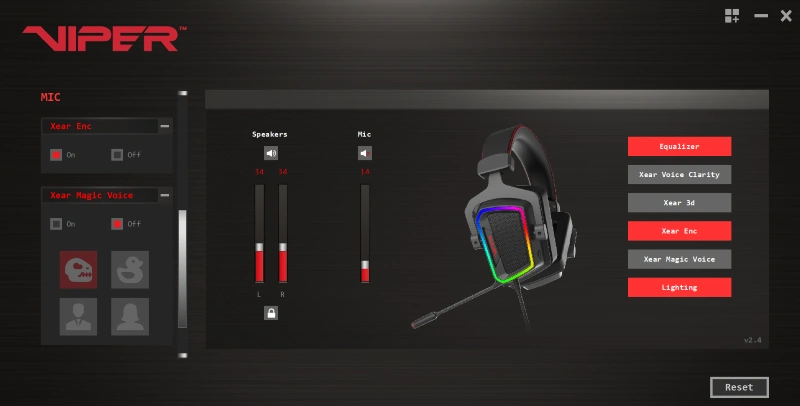
RGB LED galore
Both earcups feature a backlit edge and backlit VIPER logo. The on-headset LED control button lets you switch the LEDs on/off and allows you to cycle between several solid colors and a rainbow RGB LED effect. Whether RGB LEDs are really necessary on a headset is one of the questions that pop in my mind every time I see one of these headsets. Sure, it does look like, but you can't see it when you're gaming so you use it mainly to "wow" others.It is not possible to sync the Viper 380 RGB LEDs with other hardware. Via the Viper software you get a bit of customization options -- but these are quite limited. Five RGB LED effects are offered; constant, breathe, streamer, neon, and rhythm. You can adjust the RGB LED brightness but other than this, the customization options for most effects are quite limited. For example, some effects let you adjust the speed and let you select a single color. But it's not possible to configure multi-zone RGB LED effects.
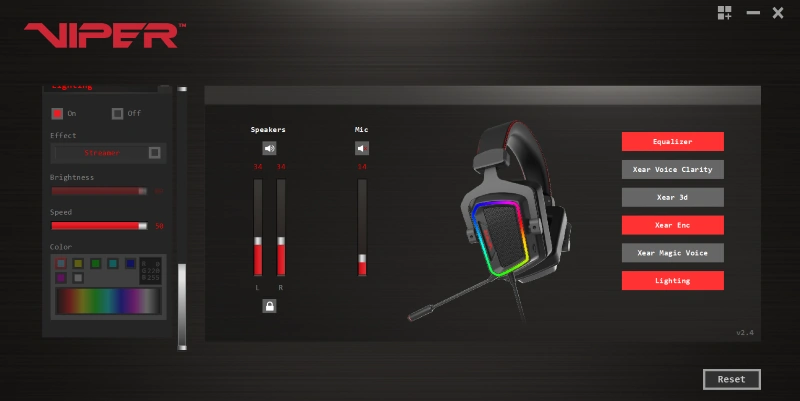
Here's how the RGB LEDs look with the "streamer" effect:
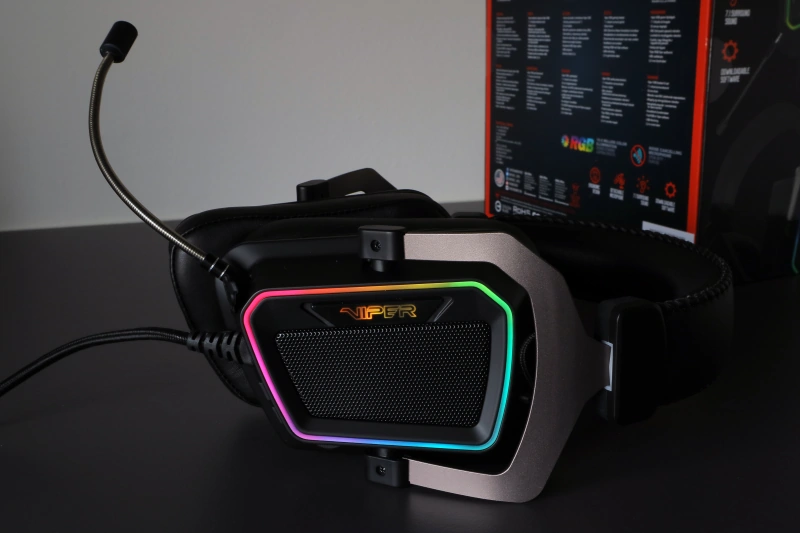
Key takeaway
In Europe, the V380 headset can easily be found for under 60EUR. The cheapest offer from a reputable store at the moment is just 50.40EUR. At this price level, it's hard to find many faults as it's not fair to compare the headset to models that cost twice or triple as much. The earcups of the V380 feel very comfortable and produce decent enough sound, especially for gaming. As with most headsets, the virtual 7.1 surround sound is more of a marketing gimmick, in some games it works better than in others. The cans block out a lot of outside noise and the 53mm drivers don't sound too bad for music or TV series either. The sound profile is a bit bass heavy -- but at this price level it will not let you down.The microphone gets the job done and offers decent audio quality. The software-based noise cancellation functionality is best left off -- it significantly downgrades microphone audio quality. In terms of build quality, I rate the Viper V380 as average too. Overall, Patriot delivers good bang for the buck with its Viper V380 RGB gaming headset. If you're looking for comfortable cans with RGB LEDs that don't break the bank, the Viper V380 ticks a lot of boxes. The biggest downside is the limited software and the fact that Viper doesn't tap into an ecosystem, the RGB LEDs can't sync with other devices.
The Good Stuff
- Ergonomic design
- Fancy RGB LED illumination
- Detachable microphone
- Blocks decent level of noise
- Onboard controls
- Decent price/quality
The Bad Stuff
- Software could use more love
- Not a lot of customization
- USB only
DVHARDWARE gives the Viper V380 RGB Gaming Headset an 8/10 and our Seal of Approval for its nice price/performance ratio.

Added: May 4th 2021
Product reviewed: Viper V380 RGB headset
Reviewer: Thomas De Maesschalck
Score: 8/10